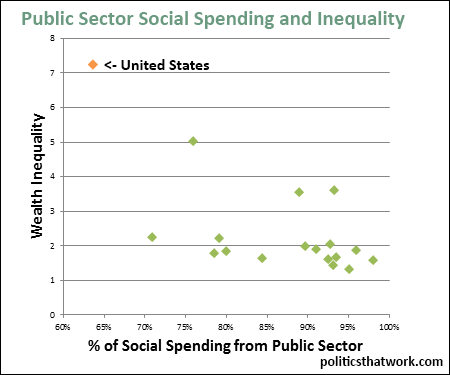
Description: Each dot represents a country in the OECD. The horizontal axis represents the percentage of social spending (largely education and health care) that is managed by the public sector. The vertical axis represents the degree of wealth inequality, measured as the ratio of the mean wealth to the median wealth. Put more simply, that is the the amount the average person's net wealth would be multiplied by if wealth were distributed evenly. The orange dot represents the United States.
Sources: OECD
Data: Excel
Last updated: March 16, 2016





